2008.08.15 10:33
has the sun finally set on oma?
The Guggenheim Las Vegas was a risk in a town that is all about risk. Apropos again, contextual even.
2008.08.15 09:41
Adam (sans Eve) in the Garden of Satire
5. Above all, the nymphaeum of the Orti Liciniani, then and still known as the temple of Minerva Medica. Alberti's inclusion of the decagon among his shapes for churches is, no doubt, due to this prototype. See also p. 24, note 1.
Wittkower, Architectural Principles in the Age of Humanism, p. 5.
But it is in the Horti Luciliani that the mechanical architecture of Piranesi reaches an extreme level of abstraction. He, a complex of structures in semicircles and in sectors of circles obeys the rules of gemmation, as they revolve around the Atrium Minervae: an astonishing mechanism, in which Piranesi achieves the maximum refinement of his geometric instruments.
Tafuri, The Sphere and the Labyrinth: Avant-Sardes and Architecture from Piranesi to the 1970s, p. 36.
1998.04.29
Campo Marzio - more discoveries
Through translating, I have come upon yet more discoveries regarding Piranesi’s “planning” and design of the Campo Marzio, however, a major discovery came about by sorting through older material, namely the Nolli map overlay with the long axis. Today was the first time I overlayed St. Peter’s Basilica directly over the Porticus Neroniani (the “up-side-down” St. Peter’s) and I was shocked by finding that the outline of St. Peter’s Basilica and Square match exactly the outline of the Porticus Neroniani and the Temple and Area of Mars complex. The piazza of St. Peter’s matches the dimensions of the Area Martis, the Temple of Mars fits within the forecourt of St. Peter’s, and the nave and transept crossing of the Neronian Porticus falls right in line with the crossing of St. Peter’s. From the beginning of my research, I have always noted the relationship between the Vatican complex and the Mars complex, but I never knew it was so exact, and now unquestionably deliberate on Piranesi’s part.
The other big discovery deals with the Horti Luciliani and the Horti Luculliani. Up until now, I mistakenly thought it was the Horti Luciliani that Messalena murdered for, but it is actually the Horti Luculliani. This change of circumstances has two effects. Starting with the Horti Luciliani, since it now seems to have no historical background, I was curious to see whether Luciliani showed up in the Latin dictionary. It did show up, and I now know that Lucilius is the father of Roman satire. Of course, this is very thought provoking because it makes me wonder if there is anything satirical in Piranesi’s plan of the garden, and perhaps the answer here has something to do with the shrine to Minerva being in the center of one of the building complexes--literally “wisdom” (but also “weaving”) in the center of a garden of satire. Furthermore, the other aspects of the horti, such as the theater and salons, now make more sense.
satire 1 a : an ancient Roman commentary in verse on some prevailing vise of folly b : a usually topical literay composition holding up human or individual vices, folly, abuses, or shortcomings to censure by means of ridicule, derision, burlesque, irony, or other method sometimes with an intent to bring about c : LAMPOON 2 a : a branch of literature ridiculing vice or folly
[and there's more]
Lauf
| |
2008.08.15 09:11
Adam (sans Eve) in the Garden of Satire
Fleming, passim:
4 July 1755
"...so amazing and ingenious fancies as he [Piranesi] has produced in the different plans of the Temples, Baths and Palaces and other buildings I never saw and are the greatest fund for inspiring and instilling invention in any lover of architecture that can be imagined. Chambers, who courted Piranesi’s friendship with all the assiduity of a lover, never could bring him even to do a sketch of any one thing, and told me I would never be able to get anything from him. So much is he out of his calculation that he has told me that whatsoever I want of him he will do for me with pleasure, and is just now doing two drawings for me which will be both singualr and clever..."
Piranesi "having seen some of these sketches was so satisfied with them and with the collection of antique things I have got casts of, that he has absolutely changed his resolution of dedicating his plan of ancient Rome to one of the Cardinals here and has dedicated it to me with the title of Friend and Architect Dilectantissimo nella Antichità!"
"It will cost me some sous, in purchasing eighty or a hundred copies of it."
--Adam
2008.08.15 08:52
Adam (sans Eve) in the Garden of Satire
Monday 8-15-77
Mass at St. Peter's was not a huge spectacle. In fact, the basilica was full of tourists.
Took a long nap in the afternoon. Most others went to the beach again. Late afternoon went to the Campidoglio by myself. Also looked at the Forum and walked home via the Corso. Stopped to sketch at Popolo.
Ate at Othello's, and later sat at the Spanish Steps.
--not much of a day since it was the Assumption; most everything was closed.
2008.08.15 08:36
has the sun finally set on oma?
The sun will finally set on OMA/AMO if Koolhaas becomes risk-averse.
How many other architects actually seek out the risk? It is indeed Koolhaas' continual seeking-out-the-risk that sets Koolhaas as an architectural designer apart. The "envelop" really doesn't get pushed without taking a risk, and Koolhaas knows that full well.
Apropos, I cannot think of a riskier work of architecture than CCTV.
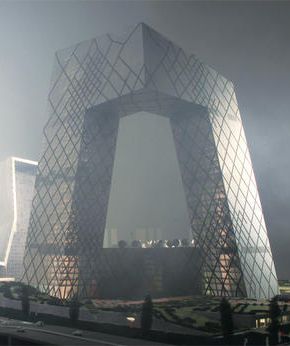
risk : 1. exposure to the chance of injury or loss; a hazard or dangerous chance
| |
2008.08.14 08:44
Adam (sans Eve) in the Garden of Satire
Sunday, 8-14-77
Lido
The Roman beach was very middle class. The Tyrannian was very salty and great to float in. We left the beach at about 5:30. We stood the whole way home on the subway.
...ate dinner on the other side of the river. First night the group split into smaller groups. Took a walk to see St. Peter's for the first time. It was a great experience to see the (not floodlit) dome looming in the darkness. The piazza was practically empty [about a dozen people including a father and his young son on a small bicycle], and the architecture had this yellow glow from the few lights that were on.
Standing at the center-point of the colonnade was inspirational.
The colonnade is huge, and so is the basilica.
2008.08.14 08:13
when thought matters
The proposition of a metabolic imagination & an assimilating imagination relative to an osmotic imagination & an electromagnetic imagination stems from the design (morphology and physiology) of the human body. The diaphragm separates the abdominal cavity from the throatic cavity. The primary operations within the abdominal cavity are assimilation (digestive tract) and metabolism (liver), while the primary operations within the throatic cavity are osmosis (lungs) and electromagnetism (heart). The diaphragm aids in respiration, defecation and partuition (giving birth). Note how the role of the diaphragm correlates directly to Eliade's 'formula' of transcendence from profane to sacred.
The main proposition is that the human mind, the imagination, operates like the body it is bottom up from. In Peircian terms then, the design of the human body is the perpetual index, symbol and icon of human imagination.
Cultures (religion, drugs, etc.) are mostly superficial modifications of the human body and imagination.
= = = = =
I forgot to mention earlier that Agamben's excerpts ("In Praise of Profanation" in Log 10) also evoked memories of Steinberg's The Sexuality of Christ in Renaissance Art and Modern Oblivion and O'Malley's study of the sermons on Humanism vis-a-vis Christ delivered before Renaissance popes within the Sistine Chapel, which came to the conclusion that Christ's humanity manifest a lacuna (in the diaphragm) retroactively opening humanity's divinity. But then came Luther's Protest and then the Reformation (of humanity's divinity).
And now I'm reminded of a movie I haven't seen in 28 years.
2008.08.13 17:48
has the sun finally set on oma?
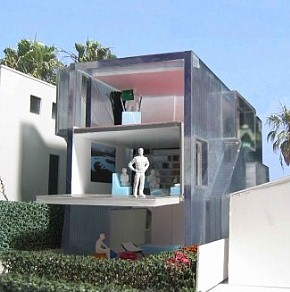
OMA's take on domestic flexiblilty, 2005.
| |
2008.08.13 17:26
has the sun finally set on oma?
There no time like the present. Cocktail of the 21st Centruy.
2008.08.13 17:15
has the sun finally set on oma?
Reenactionary architecturism is just slightly younger than architecture itself.
2008.08.13 17:09
Adam (sans Eve) in the Garden of Satire
Fleming, passim:
After Holy Week, Robert expected most of the Grand Tourists to 'file off' to Naples. He would have no regrets at their departure. Once established with Clérisseau in his own apartment at the Casa Guarnieri...one of the best houses in Rome...probably on a site fronting on the present Via Sistina and Via Francesco Crispi, slightly above the cosmopolitan artistic quarter around the Via Gregoriana and the more fashionable inns and cafés at the foot of the Spanish Steps.
18 June 1755
"Piranesi, who is I think the most extraordinary fellow I ever saw, is becoming immensely intimate with me and as he imagined at first that I was like the other English who had a love of antiques without knowledge, upon seeing some of my sketches and drawings was so highly delighted that he almost ran quite distracted and said I have more genius for the true noble architecture than any Englishman ever was in Italy. He threatens dedicating his next plan of ancient Rome to me, but of this I have no certainty; and he swears whenever he can find opportunity he will thrust me into all his prints as a gentleman of that love, that taste and that genius for Ancient Architecture, who admired such things so much that he got modellers to copy them in order to instil that taste in the minds of his countrymen."
--Adam
2008.08.13 16:37
when thought matters
It was the Hypnerotomachia Poliphili and its profanation of love. "Religion of materiality" and capitalism as today's real religion.
The symbolic isn't dead, merely profaned. Just look at higher education as the symbolic profaned via its high price.
As to architecture profaned, I'm thinking of something along the lines of how html and the internet profaned publishing.
The assimilating imagination and the metabolic imagination are the more profane imaginations, whereas the osmotic imagination and the electro-magnetic imagination are the more sacred imaginations. They can all be utilized when it comes to design.
2008.08.13 15:57
has the sun finally set on oma?
As to what's next, maybe this, or this, or this, or this. And there's always hope.
2008.08.13 15:38
has the sun finally set on oma?
This appeals to me. The overlay of generative elements and the resultant hyper-figure/hyper-ground.
 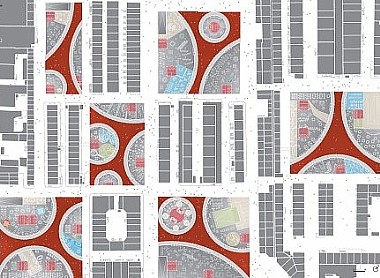
I like this too.
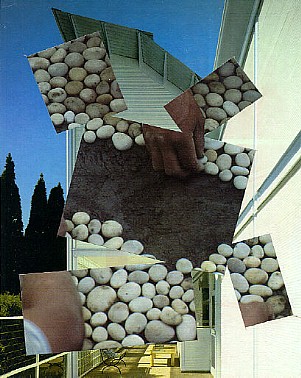 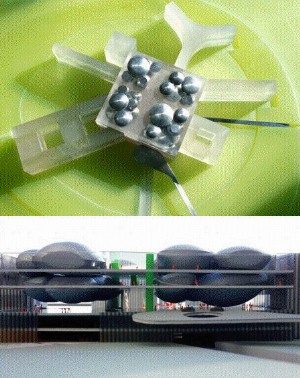
|